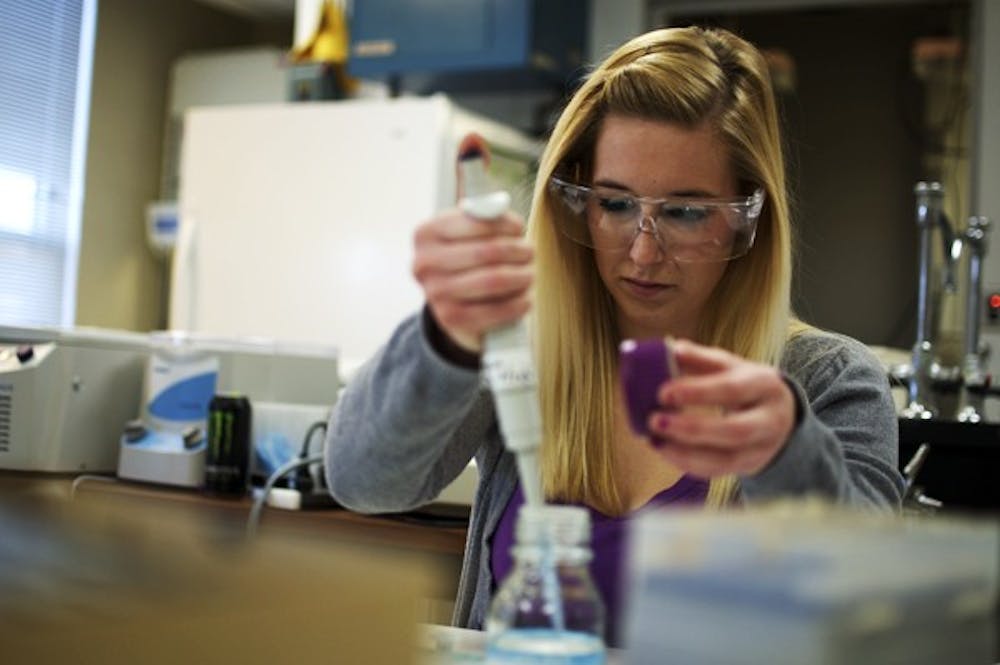Biology professor Steven Gorsich, students researching biofuel processes

Sustainability, cleaner resources and a way to separate a biofuel supply from food supply have all been top-shelf issues for environmentalists in recent years.
Steven Gorsich, assistant professor of biology at Central Michigan University, is doing his part to resolve some of those issues; he and his lab team are taking a look at the ins and outs of biofuel production.
More specifically, they’re looking at ways to streamline the process.
Most ethanol is made using cornstarch in a relatively simple reaction using yeast that yields biofuel. The problem with this method, though, is that it draws on food products to yield energy sources. Gorsich’s project examines processes that use plant-based waste products like corn stubs, grass clippings and woodchips.
“Using agriculture materials that are also used for food consumption by humans or livestock will increase the price of food at the supermarket,” Gorsich said in an email. “Using waste products to make ethanol is better, because it doesn’t directly affect food cost.”
The problem his lab is looking to overcome is that most of these materials are “tougher” than cornstarch and so their fermentation process requires an acid additive.
“In order to get the sugars out of that, it requires a tougher pre-treatment,” Gorsich said.
When the yeast starts to break down the plant material, the acids put a cap on the efficiency of the process. It results in what Gorsich refers to as “oxidative damage,” when oxidants (chemicals that adversely affect the fermentation process) like the acids are too high for the process to continue properly.
His lab’s solution isn’t to tweak the reaction’s chemical content, though; it’s to genetically change the yeast. Gorsich’s lab is looking for ways to make yeast more resistant to higher levels of oxidants, something that can boost the productivity of fermentation in those “tougher” plant materials.
Part of Gorsich's current experimental process consists of a section of DNA, called a plasmid, placed in the nucleus of a yeast cell, where it alters the yeast’s ability to produce beneficial antioxidants. Yeast cells with the new DNA are placed in an oxidant solution alongside those without.
Later, they’re stained with a fluorescent chemical that affects the mitochondria of the cells; lab technicians can then visually determine how well the cells have lasted in the oxidant bath.
“It’s our way of being able to look into a cell and say, ‘There’s what’s going on,’” said Reese graduate student Kyle Kern. If the cells with new DNA are healthier after they’ve been in the solution, the lab is able to tell they are moving in the right direction.
The applications of the experiment are broad, but mostly focused on using something that doesn’t affect the food market for alternative fuel.
Gorsich’s lab has turned out more than scientific results; students have later gone on to postgraduate programs at schools including Northwestern University, Michigan State University and Vanderbilt University.
Kern said he thinks he will probably take a year off before heading to a Ph.D. program, and knows his time as a lab tech will look good on his résumé.
Kern said Gorsich is a big help to students as well.
“I’m constantly being pushed to learn new ideas and concepts,” Kern said.
Fremont senior Meagan Postema agreed.
“He’s the best.”



